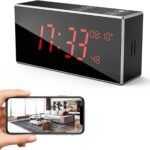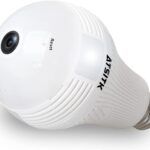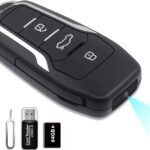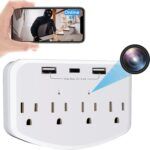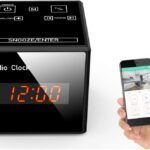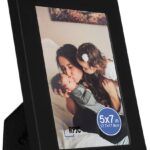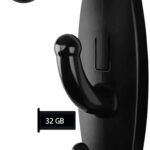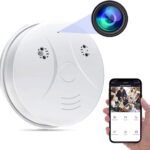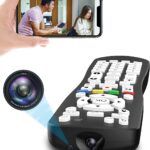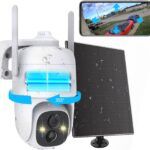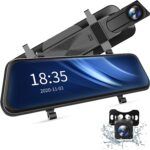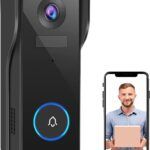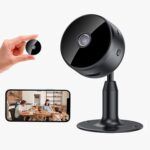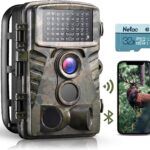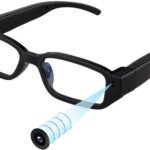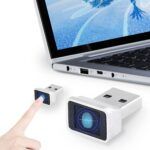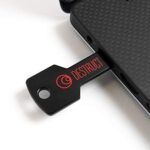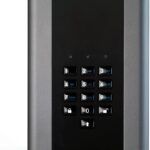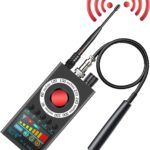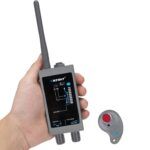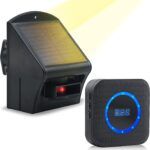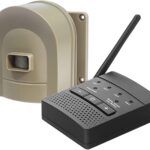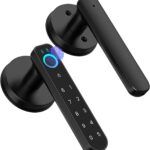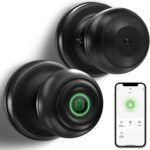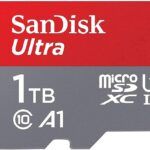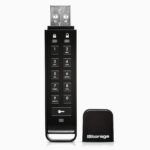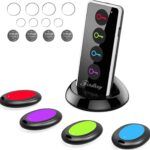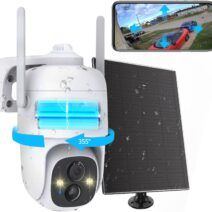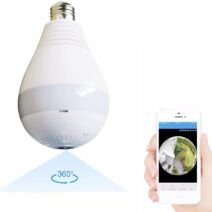- What are the types of surveillance cameras?
There are several main types of surveillance cameras available in the market. Bullet cameras are small and cylindrical and are primarily used for outdoor surveillance. Dome cameras are compact and can rotate 360 degrees, making them a popular choice for indoor surveillance. PTZ (pan-tilt-zoom) cameras are equipped with motorized controls that allow them to move and zoom in on objects remotely. Wireless cameras are connected to the internet and can be accessed from anywhere, making them an excellent choice for remote surveillance. Hidden cameras, also known as spy cameras, are small and discreet and can be used for covert surveillance. Lastly, there are thermal cameras that use heat to detect movement and are commonly used in areas with low lighting conditions.
- Can I install surveillance cameras myself?
You can install surveillance cameras yourself, depending on your skills and experience with DIY projects. Many home security companies offer DIY surveillance camera kits that come with easy-to-follow instructions and all the necessary components. You can also purchase individual cameras and install them using the manufacturer’s instructions.
Before installing surveillance cameras, it’s essential to ensure that you’re following all applicable laws and regulations regarding video surveillance in your area. In addition, you should consider the placement of the cameras to ensure that they capture the desired areas and angles while still respecting privacy. It’s also important to ensure that the cameras are securely mounted and protected from damage and weather.
- Do I need a DVR or NVR to use surveillance cameras?
If you want to record and store footage from your surveillance cameras, you will need either a digital video recorder (DVR) or a network video recorder (NVR). A DVR is typically used with analog cameras, while an NVR is used with IP cameras. Both devices can store and manage video footage, allowing you to easily access and review footage as needed. Some advanced models also offer features like remote access, motion detection, and alerts. It’s important to choose a DVR or NVR that is compatible with the cameras you plan to use and offers enough storage capacity to meet your needs. Keep in mind that you may need to hire a professional installer to set up and configure your DVR or NVR system.
However, if you only want to monitor live footage from your surveillance cameras without recording it, you may be able to use a simple monitor or display device instead of a DVR or NVR. This can be a cost-effective option if you don’t need to store footage for later use.
- Do surveillance cameras record audio?
Surveillance cameras can record audio in addition to video, but whether or not they do so depends on the camera and its settings. Some cameras come with built-in microphones to capture audio, while others require an external microphone. It’s important to note that laws regarding audio recording vary by state and country, so it’s essential to research the regulations in your area before using a camera that records audio. Additionally, it’s generally considered best practice to inform individuals who are being recorded that audio is being captured to avoid any legal issues.
We have specific product filters to show you cameras with Audio Recording capability only. Furthermore, you can look at our Voice Recorders if you only need to record audio and not video.
- How long can surveillance cameras record?
The duration for which surveillance cameras can record depends on various factors, including the size of the hard drive, the number of cameras, and the video quality. Most cameras come with a default setting that overwrites old footage once the storage space runs out (this is called loop recording). However, some systems allow you to set the recording duration for each camera individually. To ensure that you capture all necessary footage, it’s crucial to choose a system that offers ample storage and can record for an extended period.
Another factor to consider is motion detection. By setting your cameras to record only when they detect movement, you can extend the recording duration significantly. Some cameras are also equipped with a pre-recording feature that records several seconds of video before motion is detected, ensuring that you don’t miss any critical events. Overall, the recording duration of surveillance cameras varies based on your specific needs, the camera’s capabilities, and the storage capacity of the system.
Take a look at our Video Footage Storage Calculator for estimates on how much time your camera can record based on resolution, available storage space, and more.
- How do I store surveillance cam footage?
There are several options available for storing surveillance camera footage. One option is to use a DVR or NVR, which has a built-in hard drive for storage. Another option is to use a cloud-based storage service, which allows you to access your footage from anywhere with an internet connection. Many cameras also have a microSD card slot, which can be used for local storage. A Wi-fi camera can remotely stream footage to an external device such as a phone or PC, where you can set up recording software to capture video feeds.
The amount of storage you need will depend on several factors, including the number of cameras you have, the resolution of the cameras, and how long you want to store the footage. You can calculate how much time your camera can record with our Video Storage Calculator.
It’s important to note that some surveillance cameras come with built-in storage, while others require you to purchase a separate storage device. When choosing a storage option, be sure to consider the cost, reliability, and accessibility of the storage method, as well as any additional features that may be available, such as remote access and backup options.
- How do I protect my surveillance camera from being hacked?
Protecting your surveillance cameras from being hacked is crucial to ensure your privacy and safety. First and foremost, it’s essential to use strong and unique passwords for your cameras and change them regularly. Avoid using default passwords, as these are easily guessable and can make it easy for hackers to gain access to your cameras.
It’s also essential to keep your cameras up to date with the latest firmware updates, as these often include security patches to address vulnerabilities. Additionally, consider using cameras with two-factor authentication, which adds an extra layer of security by requiring a unique code in addition to a password to access the camera’s settings. Finally, ensure that your cameras are connected to a secure network with a strong password and that remote access is only granted to trusted users.
- Do video surveillance cameras work in the dark?
Surveillance cameras can come with different types of night vision capabilities, including infrared (IR) illuminators, low-light sensors, and thermal imaging. Infrared illuminators use light-emitting diodes (LEDs) to provide illumination in low-light conditions, while low-light sensors enhance the camera’s sensitivity to light. Thermal imaging, on the other hand, detects the heat signatures of objects, enabling the camera to see in complete darkness.
It’s important to note that not all cameras have the same level of night vision capabilities, and factors such as the camera’s location and positioning, the amount of ambient light, and the camera’s resolution can affect its performance in low-light conditions. It’s best to research and choose a camera with the appropriate night vision capabilities for your specific needs.
- Can I use surveillance cameras to monitor my employees?
As an employer, you may be interested in monitoring your employees’ behavior or performance for various reasons, such as improving productivity, preventing theft or misconduct, and ensuring workplace safety. However, it’s important to balance your surveillance needs with your employees’ privacy rights and avoid overstepping legal boundaries.
In general, you can use surveillance cameras in the workplace as long as you inform your employees of their use and limit their coverage to areas where privacy is not expected, such as common areas, entrances, and exits. You should also clearly define your policies and procedures for using surveillance cameras and ensure that your employees understand and consent to them.
It’s recommended to consult with legal and human resources professionals to ensure compliance with applicable laws and regulations, such as the Americans with Disabilities Act (ADA), the National Labor Relations Act (NLRA), and state and federal privacy laws.
- How do I hide my surveillance cameras?
Hiding surveillance cameras can be useful for those who want to monitor their homes or businesses without being detected. The first step to hiding a camera is choosing a small, inconspicuous device that can be easily hidden. Some common options include smoke detectors, clock radios, and picture frames with hidden cameras.
 Jametin Smoke Detector Hidden Camera$59.99
Jametin Smoke Detector Hidden Camera$59.99 Balugina Wifi Alarm Clock Bedroom Spy Camera$99.99
Balugina Wifi Alarm Clock Bedroom Spy Camera$99.99 JLRKENG Photo Frame Hidden Camera$36.99
JLRKENG Photo Frame Hidden Camera$36.99 Buedarate Wall Charger Hidden Camera (with WiFi)$69.99
Buedarate Wall Charger Hidden Camera (with WiFi)$69.99Once you have selected a camera, it is important to position it correctly to ensure it is not visible. Cameras can be placed behind objects such as plants, books, or curtains, or even mounted in the ceiling or wall to blend in with the surroundings. However, it is important to note that hiding a camera in areas where privacy is expected, such as bathrooms or changing rooms, is illegal and unethical.
- How can I ensure the privacy of my neighbors when using a camera?
When installing surveillance cameras, it’s important to respect the privacy of your neighbors. One way to do this is by positioning your cameras to capture only your property and avoiding pointing them towards your neighbor’s house or backyard. You should also make sure that your cameras are not recording any audio, as this can be a violation of privacy laws.
Additionally, it’s a good idea to inform your neighbors that you have installed surveillance cameras on your property, and let them know how you will be using the footage. This will help to alleviate any concerns they may have about their privacy and prevent any potential misunderstandings. Ultimately, it’s important to strike a balance between maintaining your own security and privacy, while respecting the rights of your neighbors.
Protect your home or office with our high-quality surveillance cameras. With advanced features like motion detection and night vision, you can ensure your property is secure 24/7. Whether you need a camera for indoor or outdoor use, we have a wide selection of options to fit your needs and budget.
Showing all 3 products:

Escanu Wireless Solar Powered Security Camera
$89.99
Kofpus Smart Light Bulb Spy Camera
$49.99-
Sale!

WNAT Smoke Detector Spy Camera
$119.99
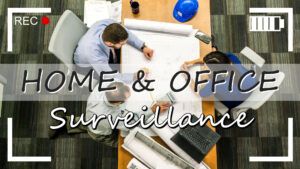
Home and office surveillance cameras are becoming increasingly popular as people are looking for ways to secure their properties and belongings. These cameras provide a sense of security and peace of mind, allowing you to monitor your property from anywhere in the world. With the advancement of technology, surveillance cameras now offer a variety of features including high-definition video, night vision, motion detection, and two-way audio.
Surveillance cameras can be used for a variety of purposes including monitoring employee behavior, keeping an eye on pets, or checking in on elderly family members. They can also serve as a deterrent to potential criminals, who may be less likely to target a property that is being monitored. Additionally, in the event of a break-in or other security breach, surveillance cameras can provide valuable evidence to law enforcement.
With a range of options available, including wired and wireless cameras, indoor and outdoor cameras, and standalone or networked systems, it is easier than ever to find a surveillance camera solution that meets your specific needs.
Home & Office Surveillance Camera FAQs
Home and office surveillance cameras can provide a valuable tool for protecting property, deterring criminal activity, and ensuring the safety of occupants.
There are many different types of cameras available, each with its own features and benefits. Whether you are looking to monitor your home or office, it’s important to choose the right type of camera and ensure that it is installed correctly to maximize its effectiveness.
Additionally, it’s important to be mindful of privacy concerns and ensure that your camera use is in compliance with any relevant laws and regulations.
With the right setup and precautions in place, surveillance cameras can provide a powerful tool for enhancing security and peace of mind.

